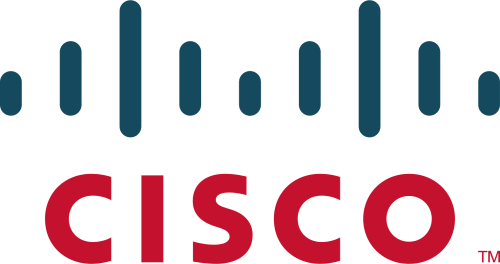Data center capacity planning is the process of preparing an IT organization’s key infrastructure resources (i.e., space, power, cooling, and power/network port connections), hardware, and software to meet the requirements of current and future workload demands of users and services. When done properly, data center capacity planning helps maintain uptime and increase the efficiency of capacity utilization.
Data center capacity planning is highly important. An IT organization’s success largely depends upon its ability to scale resources as fast and securely as possible, and inaccurate capacity planning can be very expensive and harmful to the business.
If capacity is over-provisioned, the data center will utilize resources inefficiently. For example, there may be more cabinet space than necessary or cooling capacity may exceed what is required. Alternatively, if capacity is under-provisioned, data centers can experience downtime, and applications and services can be impacted resulting in unhappy customers.
Capacity planning is complicated by the fact that utilization typically fluctuates by day, week, month, and even season. It often involves advanced planning and sophisticated calculations that ensure services and applications run smoothly.
Best Practices for Data Center Capacity Planning
Accurately planning data center capacity can be a challenge for data center managers due to the dense, distributed, and complex nature of modern data center deployments. Today’s business initiatives require organizations to secure, leverage, and analyze massive amounts and varieties of data, and data center professionals must be able to provision at the speed of business to meet IT resource demand.
To address this demand with responsiveness and agility, successful data center managers leverage data center management software and follow best practices for optimized data center capacity planning.
Data center capacity planning best practices include:
- Ensure asset data is accurate. Inaccurate asset data will throw off planning, reservations, change requests, and more. Asset information such as dimensions, data/power ports, connector types, and exact cabinet location must be accurate to effectively complete the later stages of capacity planning.
- Leverage what-if analysis. Simulate the impact of moves, adds, and changes on your data center before committing to new projects to make the most of your existing capacity and know if you can delay capital expenditures.
- Understand rack unit fragmentation. It’s typically better for space capacity to be available in many large chunks of contiguous rack units for asset installations. Analyzing rack unit fragmentation helps you understand the number of items that can be deployed in a specific location if all the items were a specific height. As equipment size increases, the available space capacity for it decreases and you may run out of space because the space you do have is fragmented into smaller RUs.
- Monitor power, cooling, and port capacity. Don’t just focus on space. Power, cooling, and power/network port capacity are just as necessary to be able to properly provision equipment.
- Know your item quantities. If, for example, you need to deploy multiple servers in a cabinet, then you also need to reserve the equivalent space, power, cooling, and port capacities. Therefore, you need to know exactly how many of each asset you are provisioning so you can ensure all the associated capacity is available as well.
- Track stranded, budgeted, and actual power capacity. Stranded power is the difference between budgeted power and actual power. Having a large amount of stranded power indicates an inefficient use of power capacity that could be used to provision additional equipment.
- Enable a single source of truth. Given the distributed nature of modern data center environments, it’s all too common for data center managers to have to query multiple disparate databases to get the data they need. For example, a CMDB might be used for change management and installation, and a DCIM solution for asset management and data center monitoring. This results in data siloes, inaccurate data, and ultimately, ineffective capacity planning. By integrating tools, you will have a single source of truth that results in improved workflow and productivity and better collaboration across functional teams to ensure that capacity planning is accurate and effective.
The 8 Steps of Data Center Capacity Planning
In the past, it was not uncommon for organizations to build out enough data center capacity to last for ten years. The actual result, however, was rampant overprovisioning, large amounts of waste, and increased costs.
Some of the reasons this data center capacity planning strategy failed are that the deployed hardware was difficult to replace, energy resources were utilized inefficiently, and moves, adds, and changes could not be completed quickly to respond to demand.
Now, thanks to advancements in virtualization, energy efficiency, and data center management software, modern data center managers can operate with a needs-based strategy that allows them to optimize data center capacity to the needs of IT and business services for just-in-time deployments.
The best data center managers in the world now approach data center capacity planning as follows:
- Determine all of the resources that are required to deploy new equipment. This includes rack space, rack power, UPS power, upstream breaker or panel power, cooling, fiber or data port connectivity at the rack, patch panels, and switches.
- Determine if the required components are already fully utilized or if there is available capacity. When possible, stranded capacity of space, power, and connections should be leveraged first.
- Ensure you can meet the capacity requirements and have redundancy to maintain uptime in the event of a failover scenario.
- Create a plan for provisioning the new piece of equipment and share it with the necessary teams such as IT, network, and facilities to gain alignment.
- Confirm that your capacity planning calculations are accurate with what-if analysis to identify the net impact of additions and decommissions on your data center.
- Reserve all the required space, power, cooling, and port capacities.
- Issue work orders to physically install the equipment.
- Audit and accept the work by updating your database to reflect the new state of capacity utilization.
Top KPIs for Data Center Capacity Planning
Modern data center professionals are tasked with doing more with less, and in today’s ever-changing data center environment, a data-driven approach is necessary to effectively plan capacity for maximum efficiency.
To gauge success and ensure business objectives are met, data center managers are increasingly turning to Data Center Infrastructure Management (DCIM) software to track the most important data center KPIs, gain actionable insights, and provide more informed decision-making.
Some of the most widely used KPIs for capacity planning and include:
- Capacity by key data center resource (space, power, cooling, and power/network port connections). This KPI is essential for making data-driven decisions when you need to reserve space and deploy new IT equipment, use power resources more efficiently, save on operating expenses, or convince management you need more capacity.
- Capacity by logical groups (function, department, etc.). Data center projects are often assigned according to logical groups. This KPI provides an extra level of granularity so you can monitor each group’s capacity utilization to properly allocate resources.
- Stranded power capacity per rack. Often, data center managers allocate more power to each rack than is demanded by the IT equipment. This causes stranded power that can be deployed elsewhere in the data center to save costs.
- Weight capacity of raised floor. Knowing the weight load capacity of your raised floor system and monitoring the total weight of your cabinets and equipment will help you ensure that you are not exceeding capacity and have the weight capacity to deploy new equipment.
- Available floor and cabinet space remaining. Tracking available floor and cabinet space lets you know how efficient your use of space is, how much space vs. power capacity you have to deploy new equipment, and how much white space is available to deploy new cabinets on the data center floor.
- Available space by rack unit size. Also known as rack unit fragmentation, this KPI lets you see how many items can be installed in your data center based on rack unit height and lets you visualize the correlation of equipment size to capacity.
- Rack unit capacity and usage trends. See the impact of installations, decommissions, and additional space on capacity growth or decline in one glance to know exactly when you will run out of capacity.
- Days of power capacity remaining. Identifying your power consumption trends and forecasting the number of days until you run out of power lets you know when you will need to purchase more capacity long before you run out.
- Power chain breaker utilization. When circuit breakers are not monitored properly, they can become overloaded and cause downtime, create bottlenecks in the power chain, or be underutilized causing you to not get the most out of your power resources.
- UPS load factor. Load factor is the ratio of the actual load of a UPS to the maximum load that could have been used at the same time. A low load factor indicates inefficient energy utilization that should be addressed.
- Cabinets with most free data and power ports. When provisioning new equipment, you should know the best place to reserve cabinet space to achieve optimal utilization of resources. This requires knowing which cabinets have available data and power port capacity.
- Data and power ports capacity and usage trends. Tracking capacity down to the data and power port level provides granular data that clues you into how many available ports remain. Monitoring your usage and capacity by connector type ensures you never run out of free ports in your data center.
Simplify Data Center Capacity Planning with DCIM Software
Leading data center managers leverage second-generation DCIM software to centrally manage all resources and capacities and simplify how they find and reserve resources.
DCIM software enables you to:
- Find the optimal cabinet to deploy IT equipment in seconds. Easily find capacity for new equipment by selecting your location and device criteria and letting the software find the available capacity for you.
- Reserve space, power, and connectivity capacity all at once. Leverage real-time data for seamless, just-in-time reservations across multiple users on multiple projects. Once an item is planned for installation, the required resources are automatically reserved and blocked from being used elsewhere.
- Easily understand power capacity at every hop in the power chain. Modern DCIM platforms budget data center power capacity just like an electrical engineer reserves power but with automatic, instantaneous calculations that eliminate manual effort and human error.
- Correlate and report on capacity restraints. Show your management team exactly why you need more data center capacity with 3D visual reports on your floor map.
- View port-level capacity at every rack. Get a real-time view of available space, budgeted power, weight, available RUs, potential power, and copper/fiber/power ports on any cabinet.
- Forecast capacity with real-time resource management. Look into the future to plan adds, decommissions, and other changes that impact your data center capacity. Leverage real-time data to forecast your remaining days of capacity left so you know when you need to purchase more.
- Easily visualize space capacity across all cabinet elevations. Say goodbye to manual Visio drawing management and get automatically created cabinet elevations. Identify available space capacity for multiple racks across any site at a glance.
Want to see how Sunbird’s world-leading DCIM software makes it easy for you get the most utilization out of your existing capacity? Get your free test drive now!
Related Images/Videos
Related Links
- Data Center Capacity: How to Measure, How to Plan, and How Much is Left?
- 7 Tips for More Accurate Data Center Capacity Planning
- 8 Steps for Effective Data Center Capacity Planning
- Power Capacity Planning Made Easy with AI and Machine Learning
- Top 5 KPIs to Optimize Your Data Center
- Data Center Capacity Management Software
- Top 40 Data Center KPIs eBook
- Top Data Center Management KPIs to Optimize Space and Power Capacity
- Demystifying Data Center Capacity Planning
- Why Should Data Center Capacity Management Be a Priority?
- Intelligent Capacity Planning in the Modern Data Center
- How to Find Stranded Capacity in Your Data Center




























